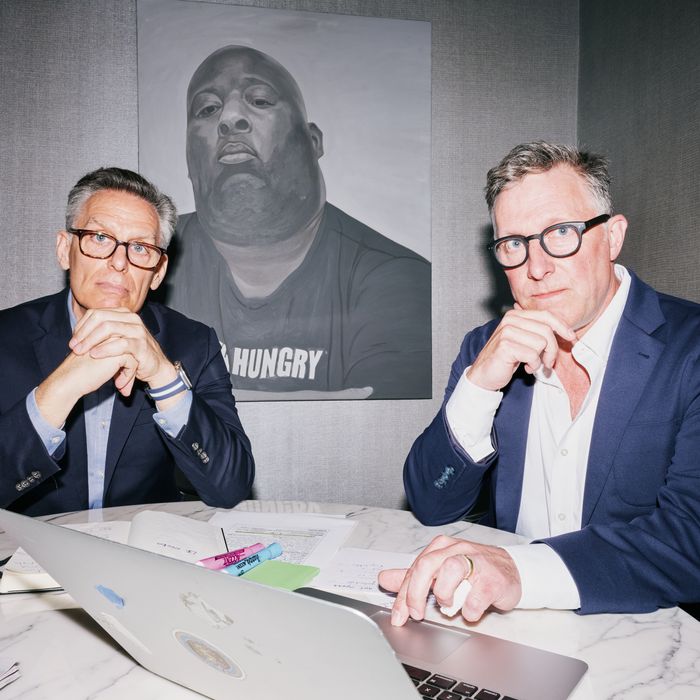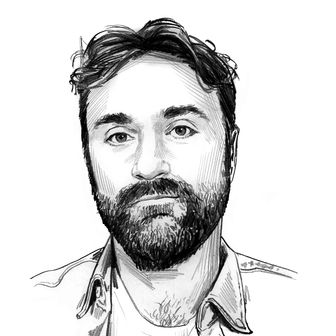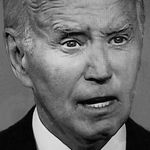
This article was featured inOne Great Story,New York’s reading recommendation newsletter.Sign up hereto get it nightly.
It was early June and George Shea was already in hot-dog hell. The New YorkPosthad just reported that Joey Chestnut — the first man in recorded history to eat 76 hot dogs in ten minutes — had been barred from participating in this year’s Fourth of July eating contest at Nathan’s. For George and his brother Richard, who together run a PR agency, organize the contest, and are the de facto kings of competitive eating in America, the news had taken over their lives. “It has been extraordinarily intense,” George said with a sigh, before explaining that he needed to attend to his other clients, too, while simultaneously getting ready for his role as the hot-dog-eating contest’s MC, known for a level of energy that puts him somewhere between a carnival barker and pro-wrestling promoter. ( “He will fight until the dome of heaven collapses and the black avalanche of space pours down around him,” is how heonce introduced Chestnut.) Now, his main attraction was out. “It has knocked me off my game on prepping for the Fourth,” he said. “So I will get up on Saturday morning and work on my remarks that are now a week behind schedule. Then I have to prep because I’m doing a strawberry-shortcake-eating contest in Mattituck.”
TheShea Communicationsoffice is located on a bland stretch of Madison Avenue that’s shared with a chaotic 7-Eleven, a Wells Fargo branch, and the Persian restaurant Ravagh. The space, which they’d recently taken over from a friend, is all slate gray. In one corner, there’s a small standing shelf with various professional awards, including the Nathan’s Mustard Belt, given to the champion of the Fourth of July contest. Inside George’s office, there’s a giant drawing of Tim “Eater X” Janus (which George drew himself), photos of his children, and the tan straw boater hat that he dons each year in Coney Island. One wall is decorated with a framed copy of the first page of a memoir by Max Rosey, the PR Mad Man who, along with Morty Matz, first devised the Nathan’s contest half a century ago. Shea has worked with a number of clients — the Greater New York Council of the Boy Scouts of America, the New York State Public Employee Conference, a handful of real-estate developers — but it’s with only one company on the roster where the brothers can use phrases like “hot dog exclusivity provisions” in their official media communications.
Chestnut is the 16-time champion of the powerful brand promotion known as the Nathan’s hot-dog-eating contest. As the New YorkPostreportedon June 11, his banishment from the contest was a clash of the hot-dog titans: Chestnut had reached an impasse with Nathan’s over his endorsement deal with Impossible Foods, the high-tech vegan-food firm. ThePoststory included details about Major League Eating — the governing body of competitive-eating contests around the country — “bending over backwards” for its star and quotes from an “insider” who called Chestnut “the Michael Jordan of competitive eating” while leaving open the possibility that the two parties could still reach a resolution.
When I talked to them, both of the Shea brothers shared their admiration for Chestnut in predictably grandiose terms: “He’s a very nice guy, and we’ve had great luck with him, and he’s an American hero, and he’s the face of the Fourth of July now,” George said. But new financial incentives had come into play. “He has a management team, and I think he wanted more money than he was getting at the contest.”
When MLE learned of the Impossible endorsement deal, George said, they asked if it would be possible to “carve out hot dogs,” so there wouldn’t be a conflict with Nathan’s. Impossible, likely understanding that “hot dogs” are an inextricable aspect of the Joey Chestnut brand, said “no.” Chestnut accused MLE of “looking to change the rules from past years” and, in doing so, put the hot-dog-eating contest at the forefront of a fake-meat culture war. How did the story leak to the press in the first place, though? “We learned of this brand conflict. And I really shouldn’t go into anything else,” said Richard, who called me from a family vacation in Maine.
“Everyone knew it would be a big story,” George said, “but within five minutes of it posting on the New YorkPostwebsite — five minutes! — the phones were buzzing. CNN, New YorkTimes,everyone.” One unfortunate NPR story round-up headlineread“Hamas’ cease-fire demands, Joey Chestnut banned from hot dog contest.” TheTimescalledthe development “devastating.” In an opening monologue, Stephen Colbertdeclaredit proof that “the American Dream is dead.” One Twitter user promised to post a daily video of himself eating a hot dog as fast as he could until “Joey Chestnut gets invited back.” (He has notpostedsince June 21, and there is no word on his current health.) Richard, meanwhile, described it as an “onslaught” of calls. “We helped to create that interest over the years, kind of built the category, so you can’t really whine,” he said.
George’s mentor, Matz, may have invented the hot-dog contest, but it was the Shea brothers who turned it into a national spectacle that now airs on ESPN and draws tens of thousands of visitors to Coney Island. To maintain interest over the years, they’ve released stories to the press about the Mustard Belt’soriginsand onetime champion Takeru Kobayashi’s “jawarthritisdiagnosis.” And Kobayashi was once arrested after rushing the stage to protest a contract dispute that kept him out of the contest, but Sheainsistedat the time it was not a stunt.
The colorful stories date back to the beginning of the competition itself after Matz told people that it had been held since 1916. (In reality, itstartedin the 1970s.) “Morty is a genius of the publicity stunt,” George said. He gave as an example the 1989 contest, when one of the participants cheated. Back then, there was no MC (that was George’s idea), no television broadcast, and the events were attended by a few dozen people max. But one of those people was a cop. “It was tiny, but there was a camera, and Morty goes, ‘Get the cop to arrest the cheater,’” George recalls. “He taught me that controversy and any turmoil created are very, very important if you are in the media.”
Chestnut’s absence leaves a void, and a chance for the next star to rise (Richard said it sets up an “incredible battle” between Nick Wehry, Geoffrey Esper, and James Webb, who are “all very quite tightly matched,” and nine-time women’s champion Miki Sudo will be defending her own title), but I had to wonder: Is this latest controversy just a bit of hot-dogkayfabe?“This certainly has raised the visibility of the event. We would never have chosen this, though,” George said. “In WWE, they write it; we don’t write it. Everything we do happens through the media. But this was inherent drama, and on a national scale, but we did not manufacture it, and we would not have manufactured it.” Throughout our conversation, George flashed a wry smile when he was amused or puts his hands over his heart to convey seriousness. He said that the news has created some long nights at work and that he’d been distressed because, in the end, he wants Chestnut to be happy and for things to work out. “But on balance,” George added, “this has been a wild roller-coaster ride and it’s been really fun.”






